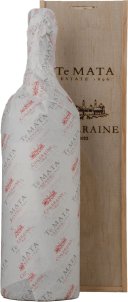Chateau Duhart-Milon-ROTHSCHILD 4me cru classe
Chateau Duhart-Milon is a fourth growth (Quatrième Cru Classé) estate in the Pauillac appellation of Bordeaux. Part of the Domaines Barons de Rothschild, the wine is made by the same winemaking team as Chateau Lafite. A blend of Cabernet Sauvignon with a substantial component of Merlot, the Grand Vin is matured for 18 months in approximately 50% new French oak barriques. Chateau Duhart-Milon is typically a sturdy solid Pauillac with firm structure and earthy savoury richness.
LA DAME DE MONTROSE Second Wine of Chateau Montrose
La Dame de Montrose, first vintage 1983, is the highly-regarded second wine of Chateau Montrose, the St. Estephe deuxième cru (second growth). Montrose has a little more than 90ha of vines, the entire site overlooking the Gironde. The vineyard is 60% Cabernet Sauvignon, 32% Merlot, 6% Cabernet Franc and 2% Petit Verdot. Around 50% (or less) of the crop goes to make the grand vin and around 30% (or more) goes into La Dame de Montrose. (The rest is used elsewhere or sold in bulk.) In good years La Dame de Montrose is considered a bargain, in the best years it stands alone as a great wine. The Dame de Montrose herself is the late Yvonne Charmolüe, who ran the estate from 1944 to 1960.
LA CHAPELLE DE LA MISSION HAUT-BRION Second Wine of Chateau La Mission Haut-Brion
This is the second wine of La Mission Haut-Brion. About 4000 cases are produced each year.
Domaine A Cabernet Sauvignon, Coal River Valley Tasmania
Domaine A Cabernet Sauvignon, which also includes a small percentage of Merlot, Cabernet Franc and Petit Verdot is a foil to the more opulent mainland styles. Violets, roses and blackcurrants pervade through the wine like an English country garden. The tannins are especially fine grained and there is a beautiful freshness and mineral quality on the palate. The parcels of fruit are batch vinified in stainless steel tanks before maturation in 100% new oak for between two and three years.
Haut Bailly Ii Second wine of Chateau Haut-Bailly
HAUT BAILLY II Second wine of Chateau Haut-Bailly, Pessac-Leognan
Te Mata Estate Coleraine Cabernet Merlot
Te Matas Hawkes Bay estate is a prestigious winery with a rich history, producing some of New Zealands most celebrated wines. If the Langtons Classification crossed the Tasman, Te Mata Coleraine would sit alongside Grange at its very pinnacle. Established, esteemed, outstanding vintage after vintage, the glowing adjectives come thick and fast.
Cullen Wines Diana Madeline
Certified biodynamic and organic. Magnificent pitch black colour with a very deep bright dark red black hue. On the nose a lovely mix of red to black currant and mulberry scents morph into violet, vanillin cedar, dried herb, tobacco, black olive and spicy bay leaf notes. Medium bodied, elegant and superbly structured, the palate features a tightly knit matrix of red to black currant, mulberry and black olive flavours. Bright youthful acidity and an assertive grainy tannin structure provide an iron girder like core. Notions of tobacco, dried herbs, vanillin cedar and spicy bay leaf infusions also chime in. Restrained and understated in its power at present it concludes long and rich yet compact. Cellar 10-20 years. Alc. 13%
Houghton Jack Mann Cabernet Sauvignon
One word - legend. Jack Mann served Houghton for a remarkable 51 consecutive vintages. His determination to create wines of intensity, elegance and regional character have inspired a generation of Australian winemakers to achieve great things. Simply one of this country's greatest Cabernets, this wine is not just single vineyard fruit, the selection process is so rigorous that often it is just a few rows from the Justin Vineyard. Such is the reverence for that great man - Jack Mann.
Houghton Gladstones Cabernet Sauvignon
Houghton Gladstones Cabernet Sauvignon is a wonderful example of well established wineries in the Western Australian wine scene with access to some amazing vineyards sites within the Margaret River. On show here are marvelous aromas and flavours of bay leaf, black tea and some spicy mocha notes. Excitingly dense on palate with harmonious oak balance and impressive acidity. A brilliant wine.
Parker Coonawarra Estate First Growth Cabernet Sauvignon
Made from the most distinguished grapes on the Parker Estate. A beautiful blend of Cab Sauv, Cab Franc and Merlot.
















